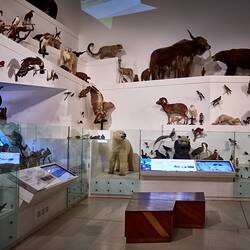Summary
This Jaguar was raised at the Royal Melbourne Zoological Gardens, now commonly known as Melbourne Zoo, and donated to the museum in 1924 after its death.
Jaguar are the largest cats in the Americas. Adult body lengths are usually between 110 cm and 180 cm with their tails adding up to 75 cm length. Most Jaguar, like this individual, are a pale yellow to red-brown with black spots on their bodies, legs and necks but the base coat of some are also black, making the spots much harder to see.
Historically Jaguar ranged from Arizona and New Mexico in southwestern US through Central America and the Amazon basin to the Rio Negro in Argentina. Their range today is largely restricted to the rainforest of the Amazon and is estimated to be around half of what it was historically. Though mostly extinct in the north of its historical range vagrant individuals are occasionally still seen in the US southwest.
Over the last twenty years populations of adult Jaguar in the wild have declined by around 25%, largely due to habitat loss through deforestation for agriculture. Previously, hunting for their pelts was a major threat but this declined from the 1970s as anti-fur campaigns reduced their desirability and international trade became illegal. Due to the likelihood of habitat loss continuing to be a threat into the future the International Union for Conservation of Nature (IUCN) considers Jaguar to be Near Threatened. They also remain listed on Appendix I of the Convention on International Trade in Endangered Species (CITES) to prevent international trade threatening them with extinction in the wild.
Specimen Details
-
Taxon Name
-
Preferred Common name
Jaguar
-
Number Of Specimens
1
-
Sex
Unknown
-
Specimen Nature
Nature: Mount, Form: Dry
-
Collected By
Unknown
-
Category
-
Scientific Group
-
Discipline
-
Collecting Areas
-
Type of Item
Taxonomy
-
Kingdom
-
Phylum
-
Subphylum
-
Class
-
Order
-
Suborder
-
Family
-
Subfamily
-
Genus
-
Species Name
onca
Geospatial Information
-
Precise Location
Captive
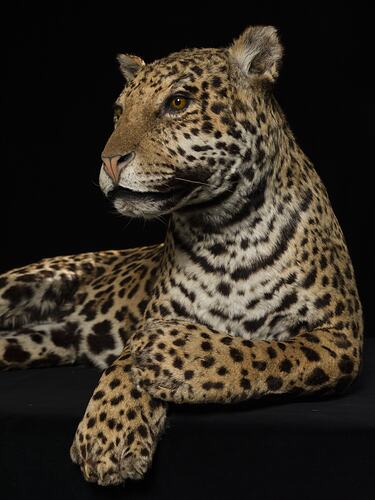
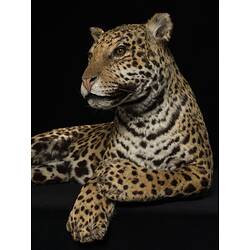
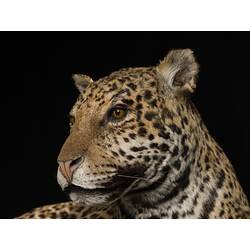
![<em>Panthera onca</em>, Jaguar. [C 27448]](/content/media/22/145922-thumbnail.jpg)
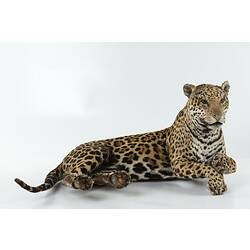
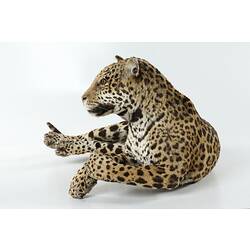
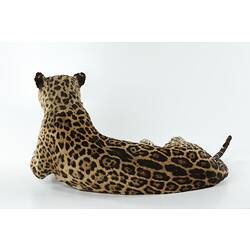
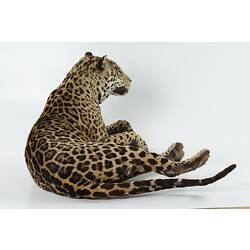
![<em>Panthera onca</em>, Jaguar. [C 27448]](/content/media/34/1961084-thumbnail.jpg)

